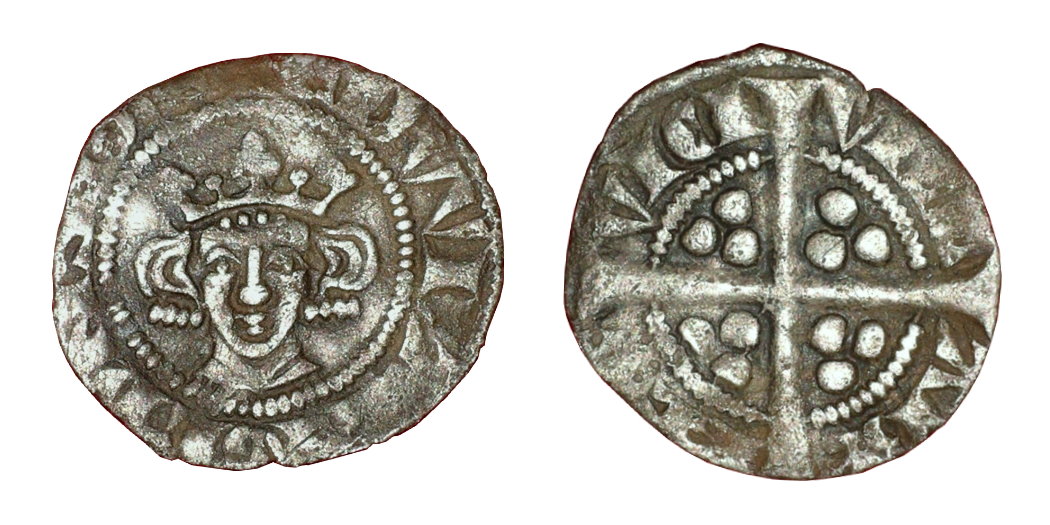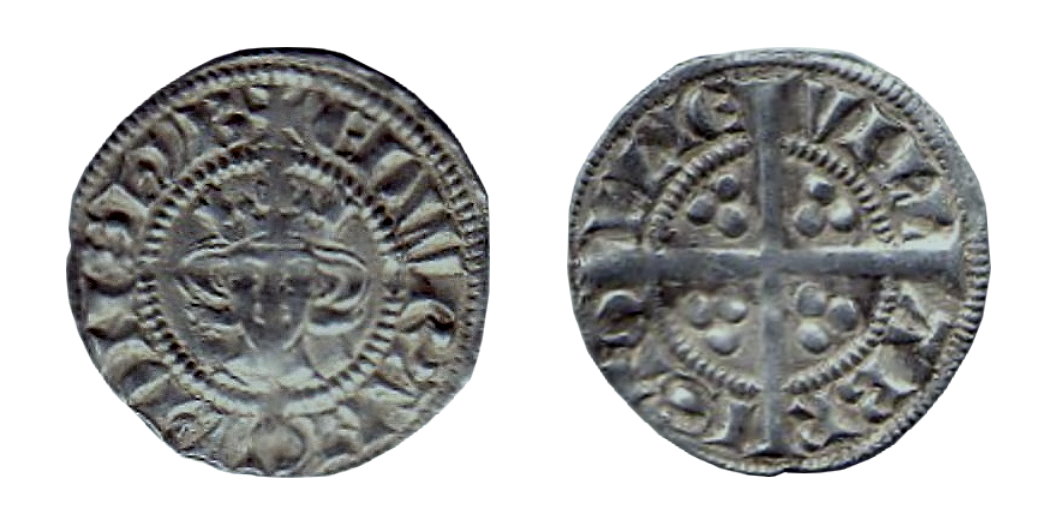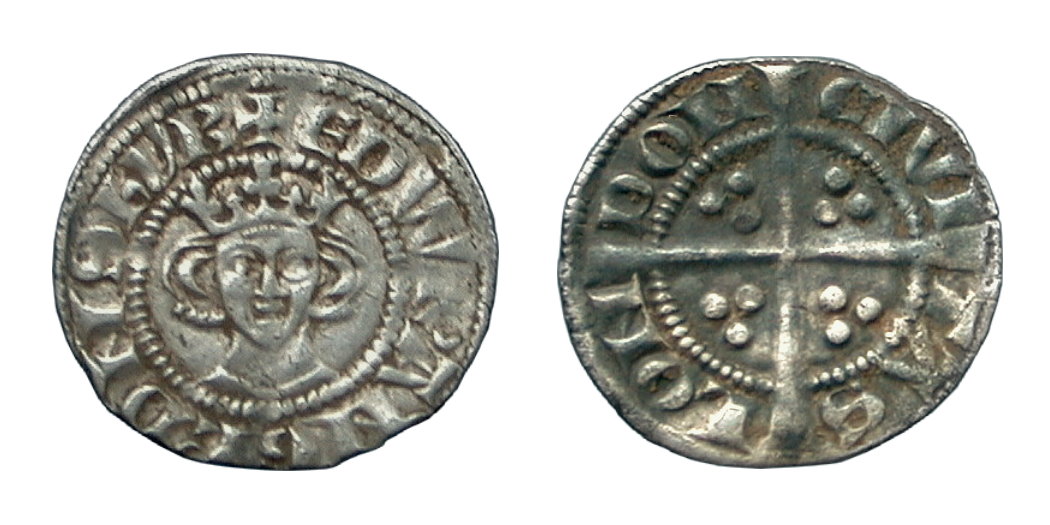
Berwick
In 1279, Berwick was under Scottish rule, and therefore had no involvement in the initial recoinage process. However, in 1296, in response to a Scottish attack on Carlisle, Edward I invaded the town and brought it under English jurisdiction. Shortly after its capture, Berwick began striking English coins. However, despite the coins being of English type, most were struck from locally made dies, and do not conform to the classification system applicable to the remainder of the Edwardian coinage. The town changed hands twice again during the period under consideration, as a result of which the issue of English coins is split into the two periods, 1296-1318 and 1333-1344. The reverse legend is VILLA BEREVVICI or one of the following variants: VILLA BEREWIC, VILLA BEREWICI, VILLA BERVICI and VILLA BERVVICI. Colon and pellet stops are sometimes present.

Bristol
The mint at Bristol was active during the initial recoinage, between 1280 and 1281, and struck halfpennies of types 3c-e, 3g, and some of the coins that are currently labelled 4c, but actually fall within Group 3 (see section entitled Observations and rationale). It also participated in the later recoinage of 1300, but did not strike any halfpennies during this period. The reverse legend is VILLA BRISTOLLIE.

Lincoln
The mint at Lincoln was active during the initial recoinage, between 1280 and 1281, and struck halfpennies of type 3c-e. Unlike the other provincial mints opened for the initial recoinage, it didn’t participate in the later recoinage of 1300. The reverse legend is CIVITAS LINCOL'.

London
London was the country’s principal mint and struck halfpennies of all known type in the series, except 3e. It was the only mint to strike halfpennies of types 4d, 4e, 6, 7, 8, 10ab, 10-11 and the earliest coins of the star-marked issue (SM1 and SM2) . The reverse legend is CIVITAS LONDON.

Newcastle
The mint at Newcastle was active during the initial recoinage, between 1280 and 1281, and struck halfpennies of type 3e. It also participated in the later recoinage of 1300, but did not strike any halfpennies during this period. The halfpennies are notable for their reverse type, which is unique in having a single large pellet in each angle, instead of the three smaller pellets found on other denominations* and on all other halfpennies in the series. The reverse legend is also shortened to NOVI CASTRI (i.e. it is not preceded by VILLA), and the lettering is correspondingly larger. The letter N in NOVI has a pellet on the bar.
* A farthing with this reverse type has been reported, but has not been traced.

Reading
The right of Reading Abbey to have a mint and moneyer had originally been established in the reign of Henry I, but it subsequently lapsed. However, in 1338 the right was revived by Edward III and the mint struck some of the later star-marked halfpennies (SM3, SM4 and SM5) of that reign. The reverse legend is VILLA RADING or VILLA RADINGY. The reverse is also distinctive in having a scallop-shell motif in one of the angles and the usual three pellets in the other three angles.

York
The mint at York - it should be noted that this is the royal, not the ecclesiastical, mint - was active during the initial recoinage, between 1280 and 1281, and struck halfpennies of type 3c-e. It also participated in the later recoinage of 1300, but did not strike any halfpennies during this period. The reverse legend is CIVITAS EBORACI.





